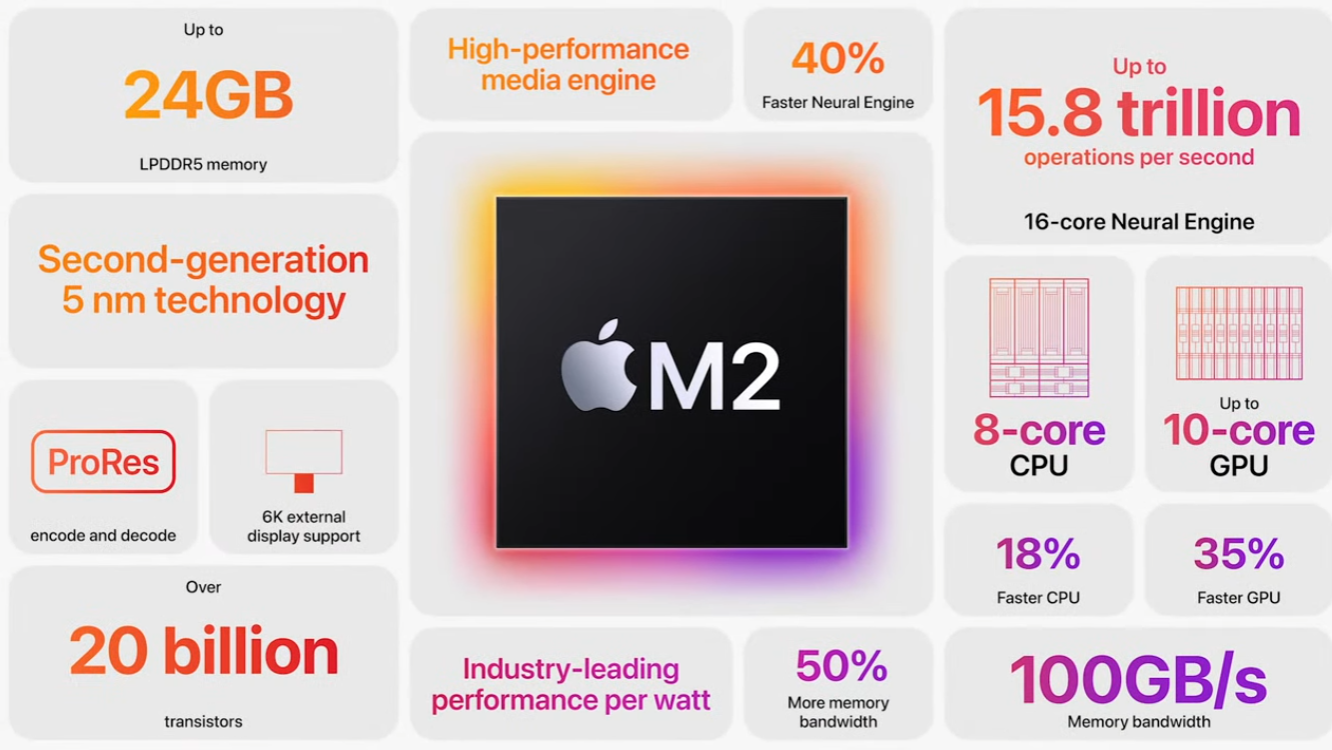Apple M2 versus M1 compared: which chip should power your next MacBook?
The M1 was revolutionary. The M2 isn't, but it's still an important upgrade


The new 13-inch 2022 MacBook Pro comes with a brand new engine: the M2 system on a chip. This is the second major version of Apple's own silicon for the Mac and the iPad Pro. The first generation, the M1, was incredible. Is it still incredible now the M2 is here in Apple's best MacBooks?
The short answer is yes, but there are some key differences between the two generations.
The main physical difference between the two generations is that the M2 has more transistors: 20 billion of them, to be precise. That's 25% more than the M1 in my Mac, and there are more cores too: where my M1 has an 8-core CPU and an 8-core GPU, the M2 has a 10-core GPU.
Apple says that as a result of this extra power the M2 will deliver 18% faster CPU performance and 35% faster GPU performance. That's impressive, but it's worth pointing out that the M1 is already ridiculously fast; I'm not sure I'd notice that 18% improvement until I was doing something massive like exporting a Logic Pro project or rendering 4K video.
Rendering video is one of the selling points of the M2: Apple says it's much faster for ProRes, which is Apple's high-quality video format, and its media engine supports 8K H.264 and HEVC video. So if you're making hi-res movies or TV shows, that's something you'll want.

M2 Macs: more power for longer
It's telling that most of Apple's performance comparisons aren't with the M1; they're with "the latest 10-Core PC laptop chip" and "the latest 12-core PC laptop chip". That's wise, because the difference in power consumption is dramatic: according to Apple, the M2 provides "nearly 90% of the peak performance of the 12-core chip while using just one-fourth the power". But when you see the difference in power per watt for the M-Series processors on Apple's legendarily vague graphs, the difference is a lot less dramatic. The M2 is more powerful, but not jaw-droppingly so.
I think if you're serious about graphics, rendering video or playing really graphically intensive games then the M2 is the processor for you. And if you want to buy a 13-inch MacBook Pro from Apple, it's your only option right now. But if you start upping the memory and storage you quickly move into the same price band as the 14-inch MacBook Pro, and I know for me I'd rather have that with its larger screen and larger selection of ports than a maxed-out M2.
Get all the latest news, reviews, deals and buying guides on gorgeous tech, home and active products from the T3 experts
The M2 will make its way into the rest of Apple's computers in the next year and a bit, of course, so you can expect an M2 Pro and an M2 Max in the bigger MacBook Pro models reasonably soon. But right now the M2 may deliver better performance than the M1, but you can't currently get it in the most flexible, expandable and powerful Macs.
An M1-powered MacBook right for you?
Writer, musician and broadcaster Carrie Marshall has been covering technology since 1998 and is particularly interested in how tech can help us live our best lives. Her CV is a who’s who of magazines, newspapers, websites and radio programmes ranging from T3, Techradar and MacFormat to the BBC, Sunday Post and People’s Friend. Carrie has written more than a dozen books, ghost-wrote two more and co-wrote seven more books and a Radio 2 documentary series; her memoir, Carrie Kills A Man, was shortlisted for the British Book Awards. When she’s not scribbling, Carrie is the singer in Glaswegian rock band Unquiet Mind (unquietmindmusic).
